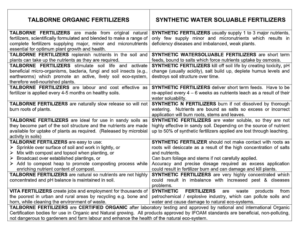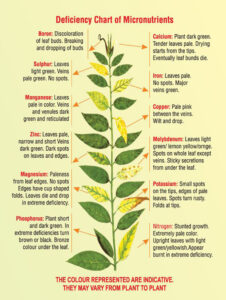Plant Nutrition
Understanding Plant Nutrition
All Nutrition starts in the Soil
Fertile soil is the foundation of nutrition which sustains all living things, including microbes, plants, animals, and people.
This complex, creative, wonderous system is designed to drive biochemistry and create energy for growth, build strong bodies, vitality, and productivity. All living things depend on the interaction of soil carbon, nutrients, minerals, and the gasses, oxygen, carbon-dioxide and nitrogen from the air, hydrogen from water, radiant energy from the sun and microbes that inhabit all eco-systems.
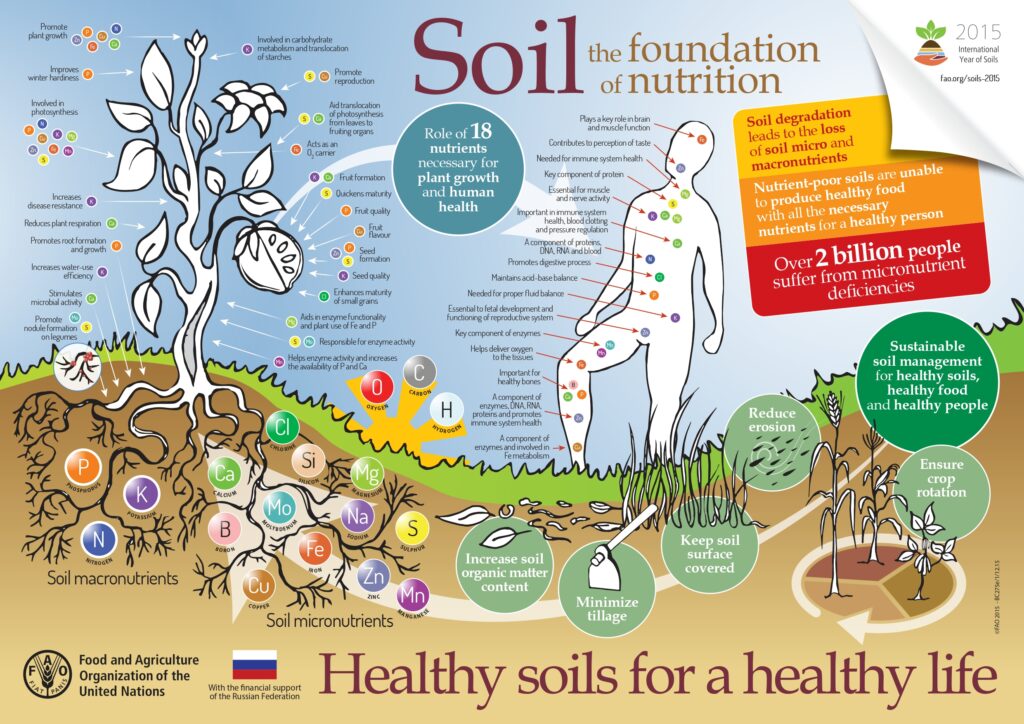
It is the ability of soil to sustain plant growth by providing essential plant nutrients and favourable chemical, physical and biological characteristics as a habitat for plant growth.
Learn more about Soil Health here: https://talborne.co.za/soil-health/
Natural forests are an example of Nature’s most fertile, productive, and diverse eco-systems. Here every plant, animal and microbe that perishes is returned into the soil, thus the nutrients are never lost, only “cycled”.
QUOTE: DR ASHLEIGH BRIGHT
“For the last 60 years our global food systems have been focused on yields and productivity – but globally we have not solved food security and at the same time we have created widespread ecological crises. We need a renewed focus on holistic solutions and metrics, which account for the multitude of benefits that crops, and livestock provide in the long term. This holistic approach may require a different mind-set, skills, methodology and produce fewer black and white results than we are used to, but they are necessary if we are to truly value ecological, human, and animal well-being.”
So, a fertile soil that is microbially active is essential to support nutrient cycling for nutrient density of food and sustainable farming, whether it is crop or animal farming.
Intensively farmed soils can be depleted of nutrients by:
- When crops are harvested for sale, the nutrients are lost from Farm.
- Nutrients can be leached and lost much faster from poor quality soils that are sandy, with low carbon, and no active microbial life, than from healthy soils.
- Composting crop residue and organic farm waste and returning it to the soil can reduce this nutrient loss, but this is seldom enough to sustain yields for intensive crop farming.
- Killing off soil-ecosystems with salt-based fertilizers, saline water, or toxic herbicide’s, pest and disease control products, or a poor nutrient management strategy by incorrect fertilizer application.
- Neglecting good agricultural practises (GAP) to regenerate and replenish soil carbon such as growing cover crops, green manure, adding compost and applying mulch for soil conditioning and to maintain fertility.
- Excessive soil disturbance through frequent ploughing and compaction disrupts soil ecosystems which increases loss of organic carbon and nutrients.
New soils for farming should be tested to determine the suitability of the crop to be produced for soil qualities such as depth, structure, chemistry, nutrient and carbon status of soils for correct remediation with soil preparation and conditioning before planting.
Get in touch with our Technical Services Team here: https://talborne.co.za/technical-services/
The addition of nutrients for balancing chemistry and replenishment through correct fertilizer supplementation is important for the success of productive and profitable intensive farming.
QUOTE: Comment by Rory Milbank of Eco-Agri Consultants on a Trial he conducted:

” The observations and test results indicate that a paradigm shift on the part of farmers is required as there can be little dispute over the fact that enhancing Soil Health has large benefits to the prosperity of the farmer, through reduced pesticide and fertilizer cost over a period of time.
It is necessary to encompass all three aspects of the soil, namely rebuilding soil nutrition, biology, and the physical structure.
Use of cover crops as green manure is imperative in providing water soluble carbon as food for the soil microbes, resulting in the biological control of soil pests such as Nematodes. Other soil diseases are potentially greatly reduced by the enhancement of Soil Health, through the creation of a vibrant aerobic Soil Biome.
The addition of Carbon, Humic and Fulvic acid, proper compost, Microbial inoculants, Fish and Kelp have a great positive effect on Micro stimulation.
The use of Organic and Bio-friendly nutrients as used in this trial makes much sense as all practices employed should have a positive influence on the Soil Biology and resultant Soil Health.”
Plants take nutrients from the soil and the air to make their plant food, but intensive crop farms will most often require additional fertilizer applied to soil or growing medium as granules, meals, as a liquid foliar feed or applied through irrigation as a soil drench.
Plant nutrition is quite complex as each nutrient has many functions in the plant, and each crop has its unique requirement to optimize productivity. Crops must have access to sufficient of the required nutrients to support the growth and productive phase to ensure good yields. For example, a newly planted tree which requires nutrients for root development and structural growth, has very different nutrient requirements when compared to an established tree that is producing fruits for harvest.
Nutrient demand increases with the growth of plant and tree crops, and deficiencies or excesses of nutrients can reduce yields by slowing or inhibiting growth.
18 Plant nutrients were identified as essential for optimal growth and development of crops, but the study of nutrition in all living things has found this to be simplistic, with many more nutrients analysed in the content of saps, cells and other plant parts that are vital to overall health.
Some build the physical plant structure from carbon-dioxide (CO2) and oxygen (O) from air, and hydrogen (H) from water (H2O). This forms the basis for carbohydrates such as sugars and starch, which strengthen cell walls, stems, leaves, and supply the energy to power microbes, plants, animals, and people from the food they eat.
1.
Macro Nutrients & Essential Elements
Nitrogen (N), Phosphate (P), Potassium (K), Calcium (Ca), Magnesium (Mg), Sulphur (S), and the essential plant elements Carbon (C), Oxygen (0) and Hydrogen (H) are required in larger quantities to optimize plant productivity and are important plant nutrients for the correct functioning of plant enzymes, biochemical processes, building strong plant cells. Some correct soil chemistry (pH) and structure which ensures the optimal uptake of nutrients, and aerobic conditions for beneficial microbial activities such as decomposition for nutrient cycling and water retention. All these nutrients are vital to healthy plant growth, energy, nutrient assimilation into cells, flavour and sugar development and resilience to pest and disease. Deficiency of these nutrients cause poor plant growth, health, and low yields.
2.
Micronutrients
Although these are used in very small quantities by the crops, they are responsible for vital functions, such as copper and iron used in chlorophyll formation, manganese and zinc are catalysts in the effective functioning of other macronutrients and fertility. Many are important in enzyme, and hormonal reactions and oxygen transport, which are all functions necessary for plant survival.
These micronutrients include iron (Fe), Boron (B), Copper (Cu), Chlorine (Cl), Manganese (Mn), Molybdenum (Mo), Zinc (Zn), Nickel (Ni), Sodium (Na), Silicon (Si), Iodine (I), Selenium (Se) Cobalt (Co) and many others in small quantities, but their contribution to plant health and resilience of crops is recognized as essential in plant nutrition.
- From natural biological cycles when all living things excrete waste or die off and the nutrients they were made up of are decomposed and recycled back to the soil to nourish the next generation of life.
- Rainfall carries atmospheric nitrogen into the soil, and some ground water contains nitrogen and dissolved minerals too.
- Soils and rocks are broken down by weathering and minerals are released into the water surrounding the soil particles for uptake by plants roots, often with the help of enzymes exuded by soil life such as phosphatase.
- Specialized bacteria and fungi living in symbiosis with the plants can sequestrate nitrogen from the air and air pockets between soil particles and make it available for absorption by plants as well as living on the roots of some plants known as nitrogen fixers (legumes).
- Applied as organic fertilisers, which combine the above sources to enrich and supplement the soils nutrients or as a foliar feed to optimise productivity, yields and quality.
- Chemical or synthetic fertilizers are made by further processing or chemical treatment of materials from natural origin like oil, gas, and minerals (e.g., Superphosphate is made by separating the triple bond (hard) rock phosphate from calcium by treatment with a strong acid like sulphuric acid) for solubility and uptake by the plant’s roots.
Fertiliser use has been key to increasing production per hectare in the last century and in so doing meeting the increased demands for food and fibre of the rapidly growing world population. However, use of poor-quality fertiliser or when applied incorrectly, can severely damage soils, ecosystems, and the planet.
Explore how ecological farming can make a difference
We designed Talborne Organic fertilizers to work in harmony with natural cycles to increase yields, while avoiding depletion of farmed soils and the environment. Instead, they actively regenerate, replenish and build up nutrients in damaged and depleted soils. They promote natural nutrient cycles as a food and energy source for beneficial microbes. Therefore, over time you will apply less fertiliser as your investment in soil health yields returns.
Nutrients are supplemented with fertilizers from these sources:
a) Organic because they originate from living things
b) Synthetic (chemical) made by industrial processes.
c) Minerals, which depending on their chemical composition can be applied to the soil as “naturally mined” or they are processed further to facilitate uptake of nutrients, like acid-treatment.
Click on image below to view
Resilience to stress
As in humans, plants that are under-nourished will suffer stunted growth, and are far more susceptible to pests, disease, and environmental factors like heat, cold, drought or flooding.
When nutrients are lacking, important processes like photosynthesis, formation of chlorophyll, DNA, RNA, proteins (amino acids), carbohydrates and lipids (fats) are not optimal and enzymes which facilitate important functions are shut down.
Stunted growth:
- Depending on which nutrient(s) are deficient, stunted growth is essentially when a plant fails to reach its genetic potential. This can mean fewer and smaller roots, leaves, and fruits.
- Plants grown with synthetic fertilizers are dependent on receiving nutrients in the form of salt-based fertilizers, except in carefully controlled systems such as hydroponic growing. When farmers are not able to fertilize exactly according to a crop’s needs, the plant will go through stages of deficiency and excess (feast and famine) leading to plant stress, stunted growth, and limited productivity.
- In a healthy soil, naturally farmed plants will develop synergies with their ecosystem which consistently provides nutrients to allow for optimal growth. These plants rely less on direct application of fertilizer and are more resilient as a result.
Pests & disease:
- Deficient plants have far less potential to photosynthesize. This is the process where plants convert energy from the sun into other forms of chemical energy such as sugars and fats. Sucking and biting insects cannot feed or are even repelled by crops that have a high nutrient density in plant sap. Brix levels should be monitored by frequent readings.
- Plants that do not produce sufficient sugars or imbalanced sugars (Nitrogen without Magnesium) will also not be able to support a large group of synergistic soil and leaf protecting microbes which are proven to provide plants with various defence mechanisms when required.
- Studies are pointing to the fact that a plant’s immune system is largely based in the soil. Plants can signal distress and call their microbial community for help. They respond by providing hormones, enzymes, and other products that plants can use to fight disease.
Environmental stress:
- With the impacts of Climate change, it is important that our food supply is resilient to climatic conditions, such as long periods of drought or excess rainfall, and extremes of heat and cold. Plants with high levels of nutrients cope better when exposed to extreme heat and cold.
- In times of drought, crops that are correctly nourished and grown in healthy soils, will have strong and well-developed roots which are fully colonised by friendly microbes. These microbes can extract water where it is scarce, and they excrete substances like glomalin which binds soil particles to improve water retention, thereby improving their chance of survival.
- During flooding, strong, and deep roots will help anchor the soil and plants in place. Roots with healthy soil biomes will shield the roots from pathogenic bacteria which result from anaerobic conditions during water logging.
Identifying nutrient deficiencies?
Nutrient deficiencies can be a very limiting factor in crop farming, and can be the cause of decreased yields, poor quality, and even a total loss of crops to stunting or pest and disease. There are many ways to determine nutrient deficiencies, but whenever the problem is serious you will quickly be able to see signs of trouble by looking at the plant’s leaves. The DEFICIENCY CHART below is a good starting point for spotting symptoms of deficiency, however it can sometimes be misleading, so calling on an experienced agronomist may be necessary.
Other tools for confirming deficiency diseases include leaf and sap analysis. These should be used in conjunction with soil analyses, as a deficiency in the plant might not be due to a deficiency in the soil, or the nutrient may be bound to soil particles, or the chemistry makes it unavailable for plant uptake. This can be corrected by a suitably trained and qualified advisor who after careful study of all the potential causes will prepare a remedial recommendation to follow.
Get in Touch with our Technical Team: https://talborne.co.za/technical-services/
Click on image below to view
Nutrient cycles, release and plant availability
The nutrient cycles of Carbon, Nitrogen, Phosphorus and Sulphur are known in agriculture. For example, while the atmosphere is almost 80% Nitrogen (N), this is not available to plants as it is bound in a strong N2 molecule. To be taken up by the plant’s roots, it has to be converted into Ammonia (NH4 ) and Nitrates (NO3 ). This process known as mineralization occurs naturally due to specialised bacteria that are capable of “Fixing” this Nitrogen for uptake by plants. Once the plant has used the Nitrogen, the nitrogen that is not available to the plant is returned to the atmosphere in a process known as denitrification. These nutrient cycles are fascinating processes.
Learn more here: https://talborne.co.za/articles/ and https://talborne.co.za/videos/
Regardless of where the nutrients come from, it is crucial that they are available to the plant.
Most synthetic fertilizers are salt based, so osmotic pressure forces nutrient into the plant. Although this is good for fast uptake, it can lead to excess or imbalances in the plant, reduced soil life as well as limited root growth.
Organic nutrition is much more complex and relies on soil life to make nutrients available to the plants as and when they require them. Although the processes are far too numerous and complex to be discussed in any depth here, some examples of this process in action are:
- Essential minerals contained in the soil are mostly in the form of unavailable compounds. For example, plants need a lot of Calcium, but when it is bonded to Carbonate, you get CaCO3 – Lime, and none of this calcium can be taken up by the plant. Plants need the help of specialist microbes which secrete organic acids to solubilise these minerals and make them available for plant uptake.
- Roots and root hairs contact a very small amount of soil, but plants can access water and minerals far outside the rootzone with the help of fungi or mycorrhizae that have a symbiotic relationship with the roots of many plants. These fine filaments reach far and wide, and in return for the plant feeding them sugars, they provide the plant with the nutrients and water it needs to grow. This is very important for crops grown in water scarce or dry conditions.
- Another recent discovery called Rhizophagy proved that root tips absorb entire microbial cells and extract needed nutrients from those cells, then release some of the microbes back into the soil to repeat the process all over again.
- Fertilizers can also be absorbed by leaves in a process called endocytosis. This is commonly referred to as foliar feeding and although it can be very useful, it should not replace the primary means of absorbing nutrition, which is through the plant’s roots.
Learn more about the fascinating synergies between plants and soil life here: https://talborne.co.za/videos/
Minerals in soil were part of parent rocks broken into sand particles, or deposited by wind and water over many years, and others are decomposed from plant and animal materials. These minerals are grouped together as positively charged ions known as Cations (+). Although many of these minerals are abundant in the soil, they are often unavailable to the plant and require assistance from the soil life to make them plant available. Although many biofertilizer suppliers sell their inputs as a saving or even a replacement for fertilizers, both the plants and the microbes need adequate and a variety of nutrients to support their needs. These promises will not be fulfilled if the nutrient status of the soil or growing substrate does not sustain both the plant and the added microbial population, and crops will fail as a result.
Do’s
+ Do use Talborne Organics formulated Organic fertilizer because it will provide a sustained release of macro, minor and micronutrients in one application.
+ Do only use inputs that will build and not harm the soil biology.
+ Do make use of soil, leaf, sap and microbial analysis, and qualified consultants to guide your nutrition plan. The benefits of doing this vastly outweigh the small cost of sampling, analysis, and experienced advisors.
+ Do think long-term, check, and track the improvement in fertility of farmed soils as it is very rewarding to see actions and investment put in to build soil health pay off in future success.
+ Do keep in mind that Talborne Organic granular fertilizer nutrition is not instantly available to the plant. Plan your application before the growth stages when the crop needs it most. The NOURISH liquid organic fertilizers will supply a faster supply of nutrients when urgent supplementation is required. Organic fertilizers may release nutrients more slowly than synthetic fertilizers, but they will sustain the plant for longer.
+ Do soil remediation before planting or fertilising. Farmers might ignore this important soil correction due to excess haste to plant or due to limited budgets, but the cost of not preparing the soil before planting is much higher due to poor crop performance. Soil remediation if done correctly should not be a recurring cost, and the impact on increased crop health and increased yields should return in profits soon.
+ Do understand your soil health and nutrient management. Your soil is your biggest asset therefore, it justifies spending time to learn how to maintain it just as you would for any other asset.
+ Do combine Organic fertilization with other soil-health, Organic or Conservation agricultural methods, GAP, and regenerative farming practices such as minimal disturbance of the soil, cover cropping, application of compost or planting green manure, crop rotation, intercropping, or adding intensive livestock grazing and other methods of soil enhancement for sustainable farming.
Don’ts
– Don’t view soil correction and crop nutrition as a cost that must be cut from budget. This line of thinking avoids the reality that your crop’s success depends on your soil, so optimizing soil fertility is probably the best investment that any farmer can make.
– Don’t use poisons or toxic chemical pesticides, fungicides, and nematicides – if it is necessary, opt for natural and organic products and solutions like IPM, there are surprisingly many available.
– Don’t use herbicides such as Glyphosate or other known chelating agents as they can bind micronutrients, making them unavailable to plants. Most herbicides have an antibiotic action (kill or inhibit the growth of microorganisms) so might disrupt soil ecosystems by killing off algae, fungi and bacteria and many other life forms which are the basis of the soil food web.
– Don’t overapply fertilizer, rather opt for good quality inputs using accurate, strategic, smaller, or more frequent applications as and when required. A consultant will be able to advise you accordingly.
– Do not use excessive amounts of animal manures. Although they have their merits and are relatively inexpensive, they are do not supply the balanced, and high nutrient levels necessary to sustain intensive crop production. You have to apply up to 3X more manure to achieve nutrient levels equivalent to Talborne Organics VITA fertilizer. Soil imbalances such as Phosphate toxicity can result from long term use of manures. Manures nutrient content is variable, and dependent on nutritional density of the animal feed, and loss of nutrients during composting and leaching such as seabird guano. The use of manures from factory farming or feedlots should be avoided due to contamination of produce by heavy metals, antibiotics and growth stimulants which kill off soil ecosystems. High levels of salts (sodium chloride) in feed rations of factory-farmed animals, add to sodium (Na) build up in soils.
– Do not use compost or manures that are not fully decomposed. If the C:N ratio is much higher than 30:1 the microbes use more Nitrogen to break down the carbon than they release, so the plant suffers stress from a nitrogen deficiency, known as a nitrogen negative period. Ensure that composting is done aerobically (aerated system), and at the correct temperature to prevent pathogens like E. coli and salmonella contamination in the soil.
– Don’t blindly accept advice from salespeople that claim to have your best interests in mind, rather do your research and ask the right questions. Unfortunately, there are too many product pushers in the agricultural industry, offering a “magic” and cheap solution. There is no saving from cheaply priced, but poor quality which does not live up to the promised results in crop yields and quality.
– Support the Companies, people and input products that have legal compliance, product safety standards, proven and repeated results and an established reputation over many years.
Soil health is very important, and as farming is a business the aim is to harvest a good crop, make a nice profit, but do so in a sustainable way to build continued success.
Subscribe for more
Want to be updated on Talborne products, Information & promotions add your email to sign-up
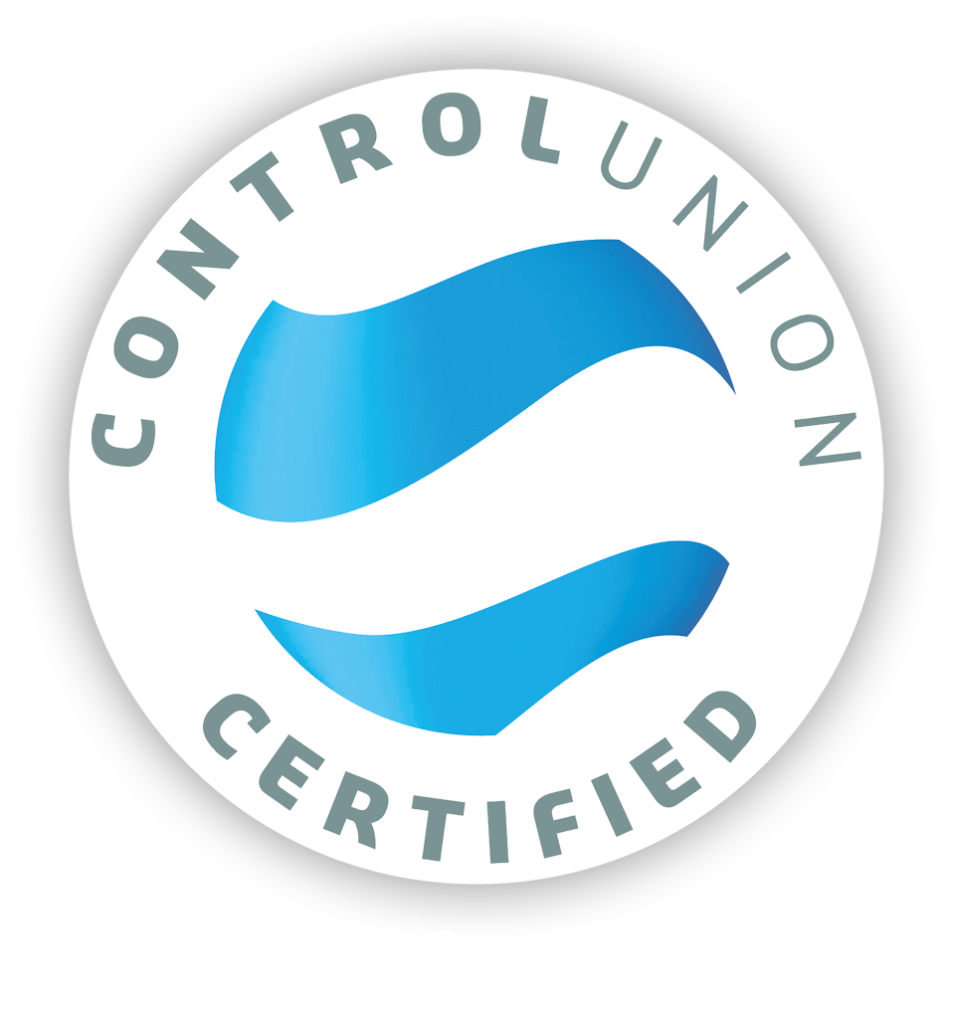
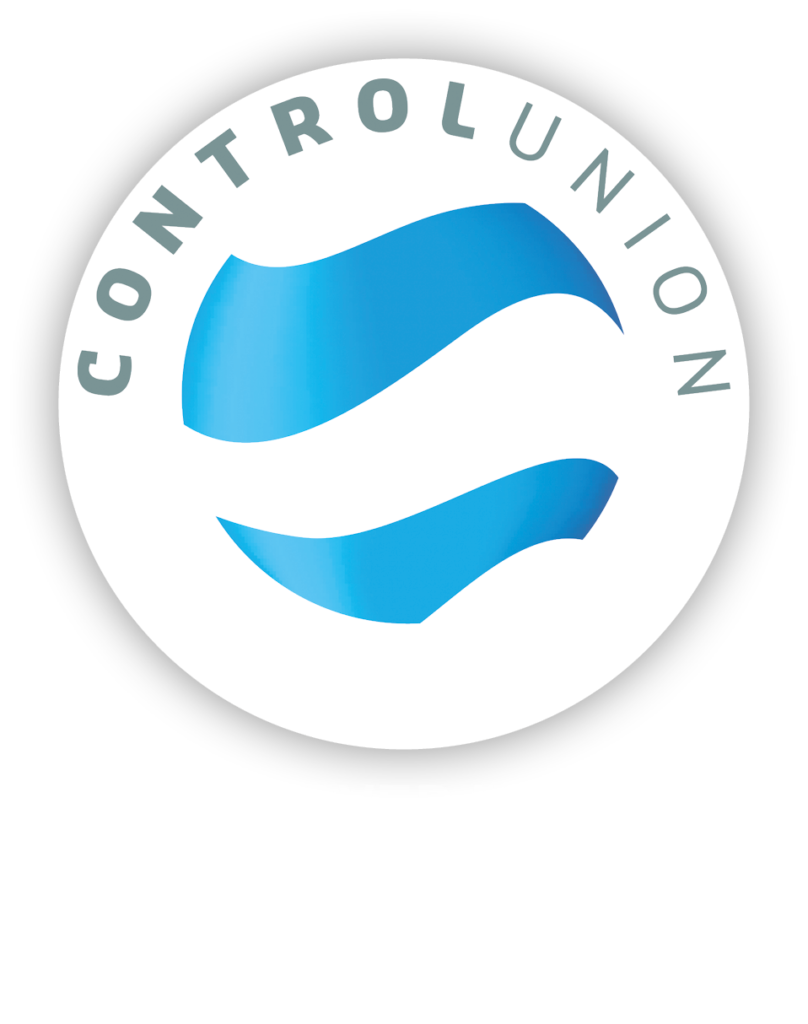
Contact
- +27 61 454 9632
- +27 13 933 3172
- +27 13 933 3603
- 079 896 5814
- Info@talborne.co.za
- 9 Tungsten str, Ekandustria, Bronkhorstspruit, GP, RSA



Copyright 2022 by Talborne Organics (Pty) Ltd.
Terms & Conditions / Privacy Policy / Sitemap


